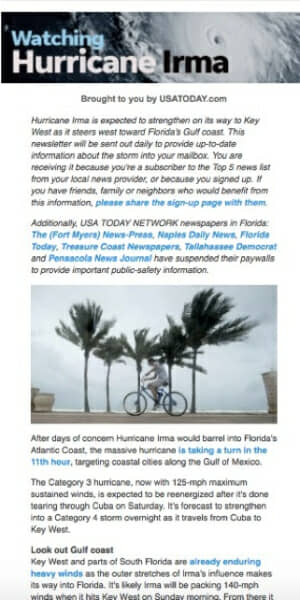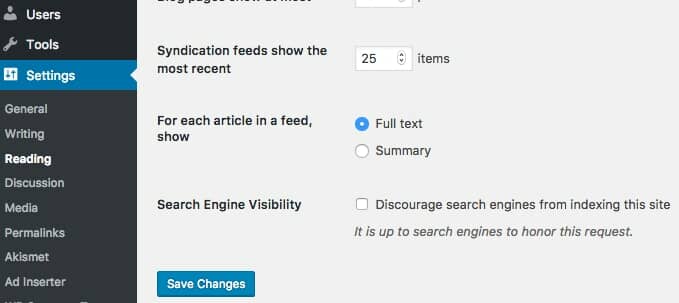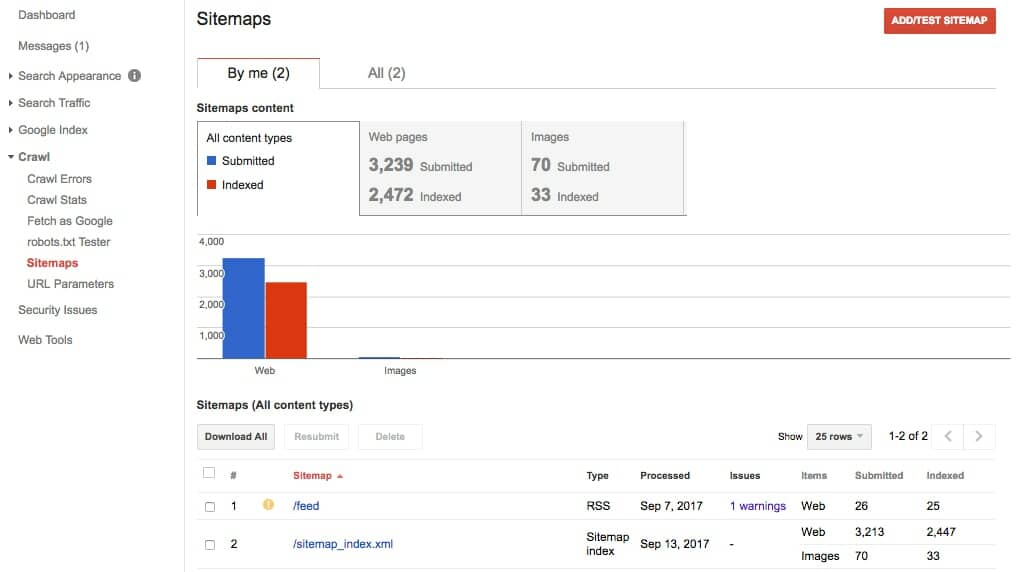
If your website has a subscriber list–I assume you have a list!–there are two potential problems you’ll always be trying to sidestep, and themed newsletters might help you do so.
One is the challenge of keeping your content fresh and interesting enough to get your emails opened and hopefully engaged-with.
The other is simply coming up with topics for these emails without pulling your hair out.
Topical ‘pop-up’ themed newsletters can be a way to address both the challenges of content creation and engagement with your readers.
When Hurricane Irma came through Florida recently, USA Today used an interesting approach that turned out to be an unexpected win-win for both the newspapers and its readers.
This weather event was about to affect just about every resident of Florida and much of the Caribbean. Why not use the reporting its network of local teams were generating to send out a curated daily summary to newsletter subscribers?
They decided to try it, calling the temporary newsletter “Watching Hurricane Irma”.
Since USA Today has no doubt deeply segmented its list of 10.5 million subscribers and sends out 500 different newsletters each month(!), it wasn’t hard for them to focus on subscribers who’d be most interested in this particular series, i.e. mostly Florida residents.
In this case, they saw an open rate of over 50%.
95% of respondents to a survey conducted afterwards responded positively.
It’s interesting to me that most of those 500 newsletters I mentioned are currently are auto-generated. No doubt auto-generating a mix of already-written stories that should match the interests of given list segments is an easier way to organize and scale an effort like this, keeping costs low.
Part of what USA Today learned here however was that it was worth it to allocate a staff writer to create an original newsletter, using stories and raw information the local reporters were gathering.
Here are the takeaways I see for smaller publishers when it comes to themed newsletters:
Themed Newsletters For Smaller Publishers
As I said, this is as much a content generation strategy as it is a way to engage your readers.
No one ever said you have to restrict the amount of broadcast emails you send out, or that you can’t send a one-off email sequence over a few days (or, periodically) that is definitely not evergreen. Why not focus on timely content that comments on or weaves in a current news story?
As with website content, there’s a lot to be said for riding on the back of a topic that has built-in interest. Maybe there is an element of the story that would especially interest your subscribers, an angle that might not be covered by more general interest websites or news outlets?
You probably wouldn’t want to use a themed newsletter related to a natural disaster like Hurricane Irma to monetize–I sure wouldn’t–but your own commentary on a current event could have possibilities for new monetization.
Seems like testing themed newsletters might be worth a test.

 After you submit your sitemap it can still take some time to have your site show up. Check using the method above; enter the URL into Google. As long as you have the box ticked in your WordPress settings as I show you above, the crawlers will find you eventually if you’ve submitted your site to Google, added it to Google Search Console, and submitted a sitemap.
After you submit your sitemap it can still take some time to have your site show up. Check using the method above; enter the URL into Google. As long as you have the box ticked in your WordPress settings as I show you above, the crawlers will find you eventually if you’ve submitted your site to Google, added it to Google Search Console, and submitted a sitemap.